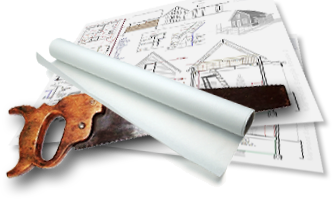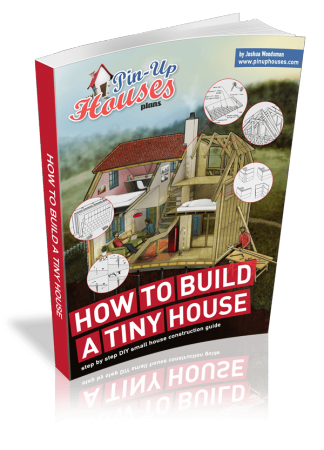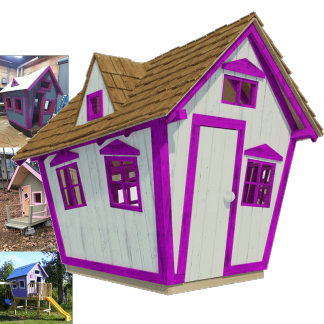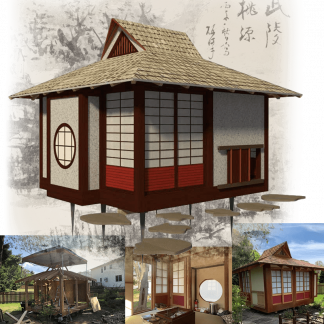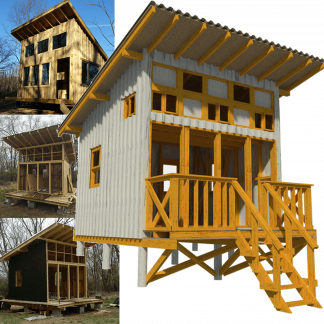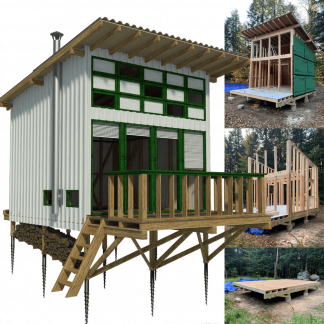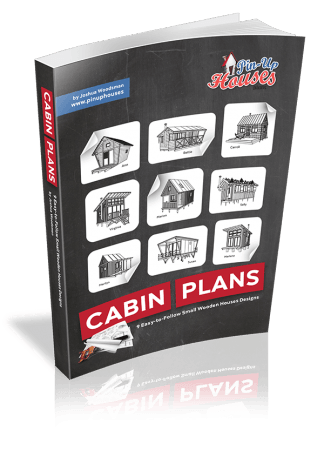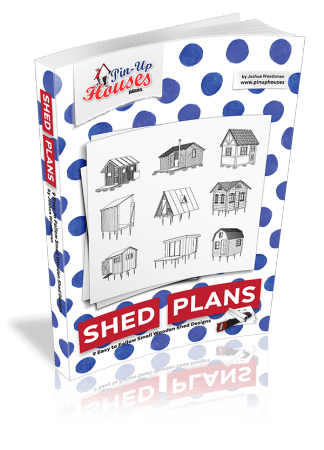
Dreaming of turning an ordinary shed into a cozy, fully functional tiny home? You’re not alone. As housing costs rise and people embrace minimalist, sustainable living, shed conversions have become an attractive and affordable way to create a personal retreat or even a full-time residence. Whether you’re transforming an old backyard shed or purchasing a prefabricated structure, this guide will walk you through the process of making your tiny home dream a reality. If you’re using wood for your tiny home project, a lumber staining machine can help you achieve a uniform and long-lasting finish, saving time compared to manual staining.
1. Why Convert a Shed Into a Tiny Home?
A shed conversion offers a cost-effective and flexible way to build a tiny home. Unlike traditional homes, sheds provide a ready-made structure, reducing construction time and material costs. They are also highly customizable, allowing you to create a tailored living space that fits your lifestyle and aesthetic preferences.
Shed homes are particularly popular in states like Texas, where more relaxed zoning laws make it easier to place a converted shed on rural or even suburban land. Many Texans are turning to shed-to-home conversions as a way to live mortgage-free while still enjoying modern comforts.
2. Planning & Permits: What You Need to Know
Before getting started, it’s crucial to check local zoning regulations and building codes. Some areas have strict requirements on minimum square footage, utility connections, and foundation types for habitable structures.
- Texas, for example, has growing interest in small-scale housing, but zoning laws vary by municipality. Some towns are more welcoming to alternative housing solutions, while others require specific permitting for residential shed conversions.
- The tiny home movement is gaining traction in North Carolina, and many counties have started allowing shed-to-home conversions, especially in areas where affordable housing is in high demand.
To avoid costly setbacks, contact your local zoning office and get clarity on what permits and modifications are required to legally convert a shed into a home in your area.
3. Choosing the Right Shed for Conversion
Not all sheds are created equal. If you’re purchasing a shed specifically for conversion, consider these factors:
- Size & Layout – A minimum of 120-200 square feet is recommended for comfortable living.
- Structural Integrity – Choose a shed made from high-quality wood or metal that can withstand weather conditions.
- Roof Style – A gable or barn-style roof provides more headroom and better ventilation.
- Insulation & Climate Control – Depending on where you live, you may need to reinforce insulation to keep your shed warm in winter and cool in summer.
4. Essential Upgrades: Making a Shed Livable
Once you’ve selected a shed, the real transformation begins. Here’s what you’ll need to consider:
A. Insulation & Climate Control
Proper insulation is crucial for energy efficiency and comfort. Use spray foam, rigid foam board, or fiberglass insulation in the walls, floor, and roof. If you’re in Texas, where winters can be harsh, extra insulation and a wood stove or mini-split heating system may be necessary.
B. Electrical & Plumbing Systems
- Electricity: Install wiring for lighting, outlets, and appliances. If off-grid, consider solar panels for a sustainable power source.
- Water & Plumbing: Many shed homes use composting toilets, rainwater collection systems, or small-scale plumbing hookups to stay self-sufficient.
C. Flooring & Interior Finishes
Upgrade the floor with engineered wood, vinyl planks, or tile for durability and style. Install drywall or wood paneling on the interior walls to give your shed home a polished look.
D. Doors, Windows & Ventilation
Replace the standard shed door with a secure, insulated entry door. Add windows for natural light and ventilation, which will help regulate temperature and air quality.
5. Designing a Functional Tiny Home Layout
Space is limited, so smart design is key. Use multi-functional furniture and built-in storage solutions to maximize space.
- Lofted Beds & Murphy Beds – Free up floor space by elevating sleeping areas.
- Foldable Tables & Compact Kitchens – Opt for wall-mounted or collapsible dining areas.
- Vertical Storage Solutions – Use shelving, hanging racks, and under-bed storage to keep things organized.
6. Financing Your Shed-to-Tiny Home Conversion
Converting a shed into a home is significantly more affordable than building a traditional house, but costs can still add up, especially when factoring in insulation, utilities, and permits. Many homeowners finance their projects using personal savings, loans, or home equity options.
Some homeowners looking to finance shed-to-home conversions explore options like home equity loan rates in Vermont, which can provide a flexible way to fund necessary upgrades while preserving savings. It’s important to research financing options that work best for your situation and long-term goals.
7. The Final Touches: Making Your Tiny Shed a Home
With all the major structural work completed, it’s time to personalize your space. Add your own unique decor, lighting, and furniture to make the space feel warm and inviting. Whether you go for a rustic cabin feel, a modern minimalist look, or a boho retreat vibe, your tiny shed home should reflect your personality and lifestyle.
Final Thoughts
Converting a shed into a tiny home is an exciting DIY project that offers affordability, sustainability, and a simpler way of living. Whether you’re in Texas, Vermont, or North Carolina, understanding local regulations, choosing the right shed, and making smart upgrades will ensure your tiny home is both legal and livable.
With careful planning and creativity, your dream of a small, cozy, and functional home can become a reality, all starting with a simple shed!

